Construction work is essential for building infrastructure. However, inherent risks can lead to injuries or even fatalities if safety measures are not followed. In 2022 alone, the US Bureau of Labor Statistics reported that the construction industry recorded 1,056 deaths.
Prevention is not the only reason to employ safety measures. Failure to comply with Occupational Safety and Health Administration (OSHA) standards is also a costly mistake, with up to $16,131 per violation, depending on its severity.
By raising awareness of these hazards and providing practical prevention tips, construction companies and workers can prioritize safety and reduce the occurrence of these injuries.
1. Falls
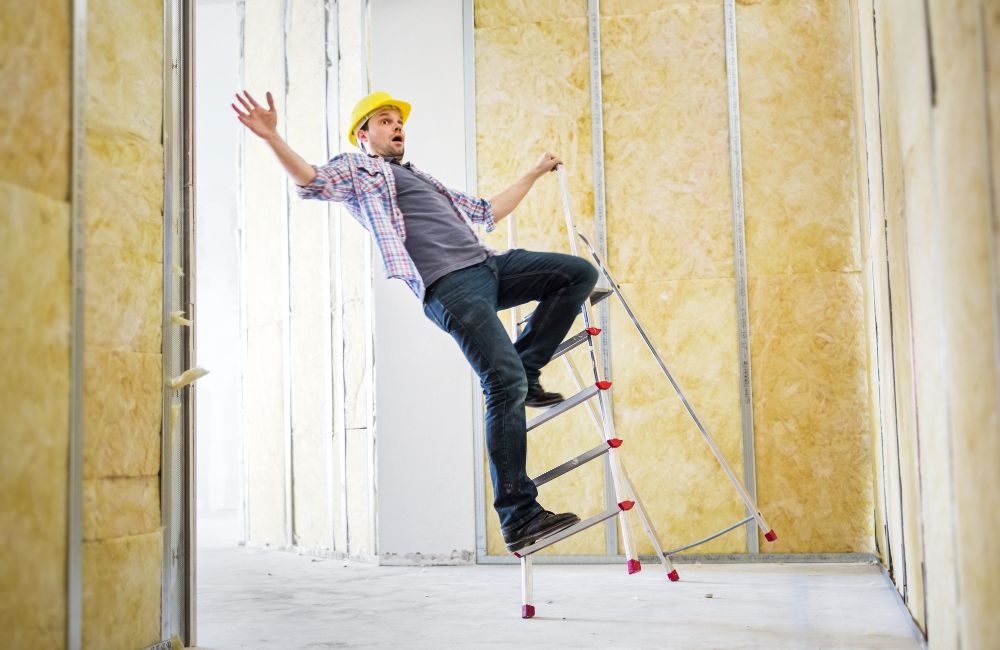 Falls are part of what’s called the “fatal four” which accounts for 65% of all construction-related deaths. They can happen when workers lose their balance on high places like roofs, ladders, and scaffolding. Sometimes, holes in the floor or unsteady walking surfaces can lead to serious falls. These accidents can cause severe harm or even be fatal.
Falls are part of what’s called the “fatal four” which accounts for 65% of all construction-related deaths. They can happen when workers lose their balance on high places like roofs, ladders, and scaffolding. Sometimes, holes in the floor or unsteady walking surfaces can lead to serious falls. These accidents can cause severe harm or even be fatal.
To help prevent falls in construction areas, consider these tips:
- Always wear harnesses and other fall protection equipment when working at heights.
- Conduct frequent safety training sessions to teach workers how to avoid falls.
- Make sure ladders and scaffolding are stable and secure before use.
- Put up clear signs around open ledges, holes, and dangerous areas.
- Maintain clean and clutter-free work areas to prevent tripping hazards.
2. Struck-by Object Incidents
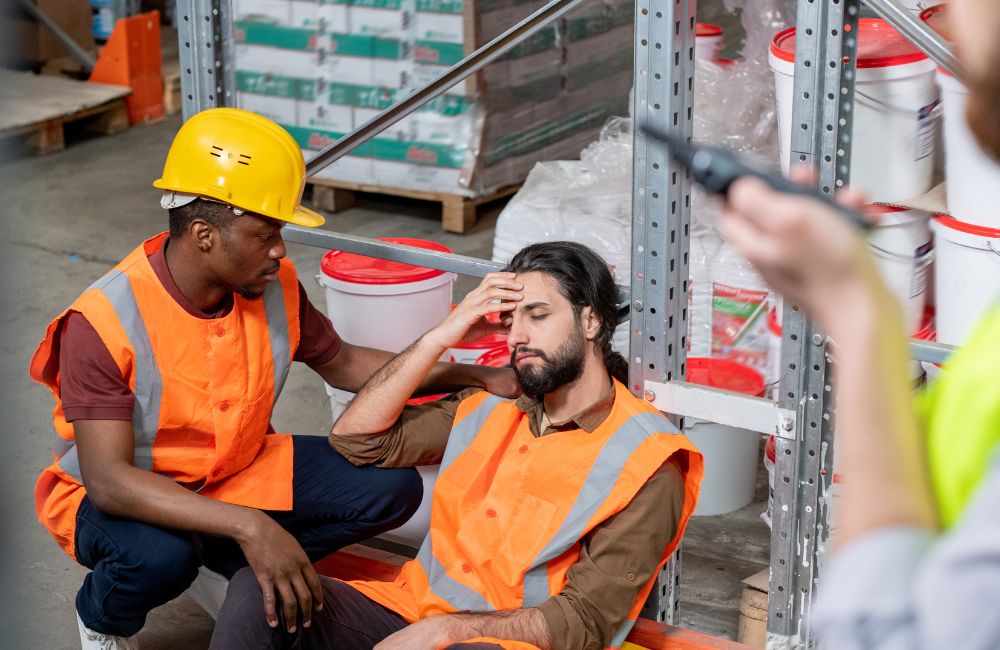 Did you know that struck-by incidents are the second-leading cause of death in a construction site? These happen when a worker is hit by an object falling, swinging, or rolling.
Did you know that struck-by incidents are the second-leading cause of death in a construction site? These happen when a worker is hit by an object falling, swinging, or rolling.
Common examples include tools dropped from heights, flying debris from machinery, and moving vehicles on site. These accidents can lead to serious injuries, ranging from bruises and fractures to life-threatening conditions.
To prevent struck-by-object incidents on construction sites, here are some practical tips:
- Ensure all tools and materials are securely stored and cannot fall from heights.
- Set up barriers or nets around areas where falling objects are a risk.
- Helmets, safety glasses, and other protective equipment can shield workers from injuries.
- Keep a safe distance from heavy machinery and areas where work is being done overhead.
- Ensure that all vehicles and mobile equipment are operated safely and that workers are trained to avoid moving machinery.
3. Electrocutions
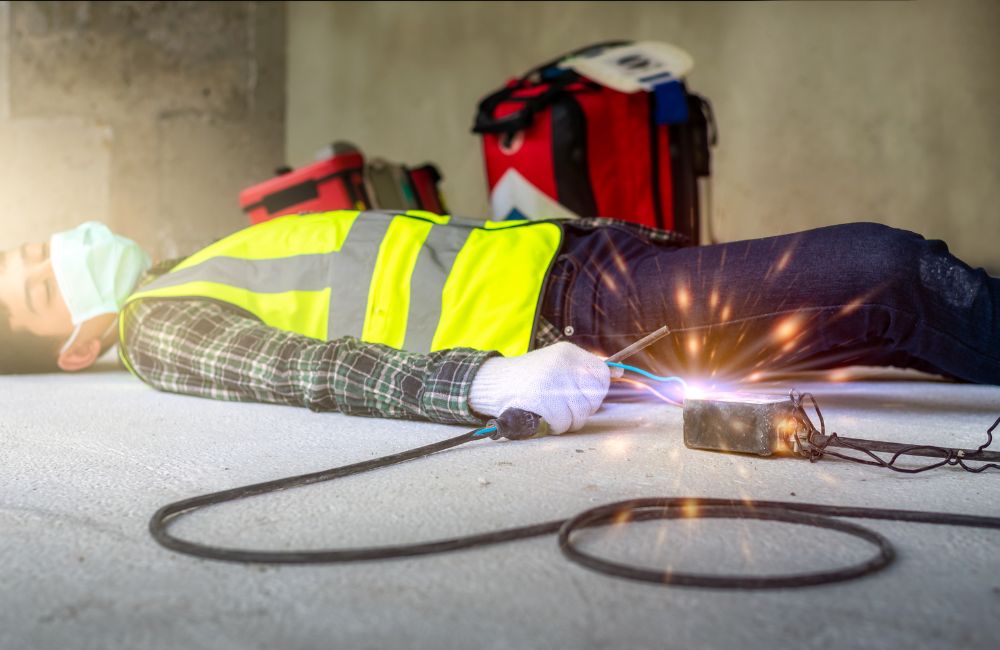 Electrocutions are a critical concern in the construction industry and a frequent cause of construction injuries. In 2019, electrocutions accounted for 7.2% of construction-related deaths, according to the Centers for Disease Control and Prevention (CDC).
Electrocutions are a critical concern in the construction industry and a frequent cause of construction injuries. In 2019, electrocutions accounted for 7.2% of construction-related deaths, according to the Centers for Disease Control and Prevention (CDC).
These occur when workers come into contact with live electrical wires, exposed electrical components, or use faulty power tools and machinery. Electrocution can lead to severe injuries, burns, and even fatalities.
To prevent electrocution and ensure electrical safety on construction sites, consider the following tips:
- Identify and label all electrical sources before starting work.
- Ensure that all electrical tools and equipment are properly insulated.
- Regular electrical equipment and wiring checks are conducted to identify and repair damages.
- Provide continuous safety training on electrical hazards and proper handling of electrical equipment.
- Use appropriate personal protective equipment (PPE) like insulated gloves and boots when working with electricity.
4. Caught between Hazards
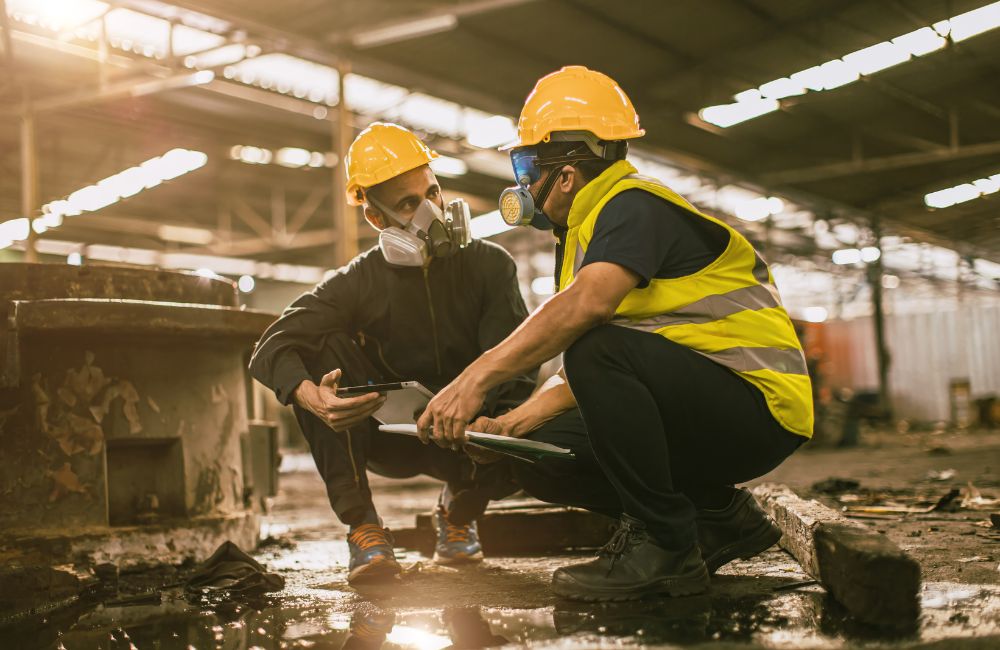 Caught between hazards are dangerous situations where workers can get trapped or crushed between two or more objects. These incidents are a significant source of construction injuries. They can occur when a person gets caught in machinery, compressed by shifting materials, or pinned between equipment and a solid object. Such accidents often result in severe injuries or fatalities.
Caught between hazards are dangerous situations where workers can get trapped or crushed between two or more objects. These incidents are a significant source of construction injuries. They can occur when a person gets caught in machinery, compressed by shifting materials, or pinned between equipment and a solid object. Such accidents often result in severe injuries or fatalities.
To minimize caught between hazards and prevent construction injuries, consider these safety tips:
- Ensure all machinery is properly maintained and safety guards are in place.
- Train workers on the proper operation of machinery and the importance of staying clear of moving parts.
- Keep work areas clean and well-organized to reduce the risk of getting pinned or trapped.
- Implement lockout/tagout procedures to ensure machinery is de-energized and cannot start unexpectedly during maintenance or repair.
- Work in pairs or groups so that someone is always available to help or raise an alarm in an emergency.
5. Overexertion Injuries
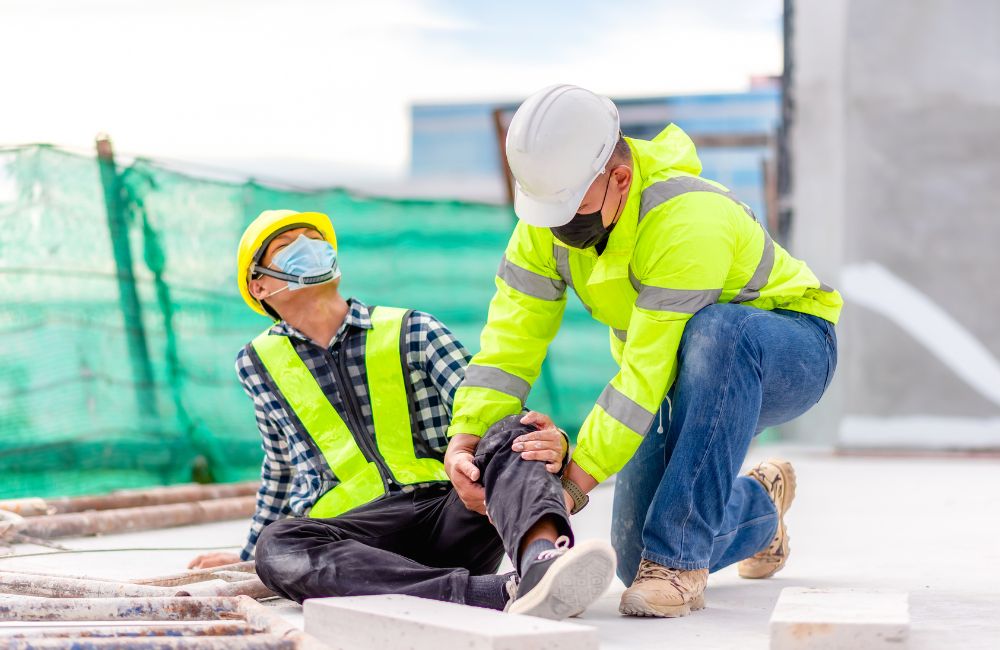 Overexertion injuries are common in the construction sector and are a leading cause of construction injuries. These injuries occur from repetitive motions, lifting heavy objects, or working in awkward positions for extended periods. Symptoms can range from muscle strains and joint injuries to chronic back pain, significantly affecting a worker’s ability to perform tasks.
Overexertion injuries are common in the construction sector and are a leading cause of construction injuries. These injuries occur from repetitive motions, lifting heavy objects, or working in awkward positions for extended periods. Symptoms can range from muscle strains and joint injuries to chronic back pain, significantly affecting a worker’s ability to perform tasks.
To prevent overexertion injuries in construction, consider the following strategies:
- Teach workers to lift heavy objects using their legs rather than their back.
- Encourage using mechanical aids like forklifts, dollies, or hoists to move heavy materials.
- Implement regular break schedules to allow workers to rest and recover, reducing strain and fatigue.
- Provide training on ergonomics to help workers understand how to arrange their work environment to fit their physical needs.
- Promote fitness and flexibility programs to strengthen muscles and prevent injuries.
6. Machinery Accidents
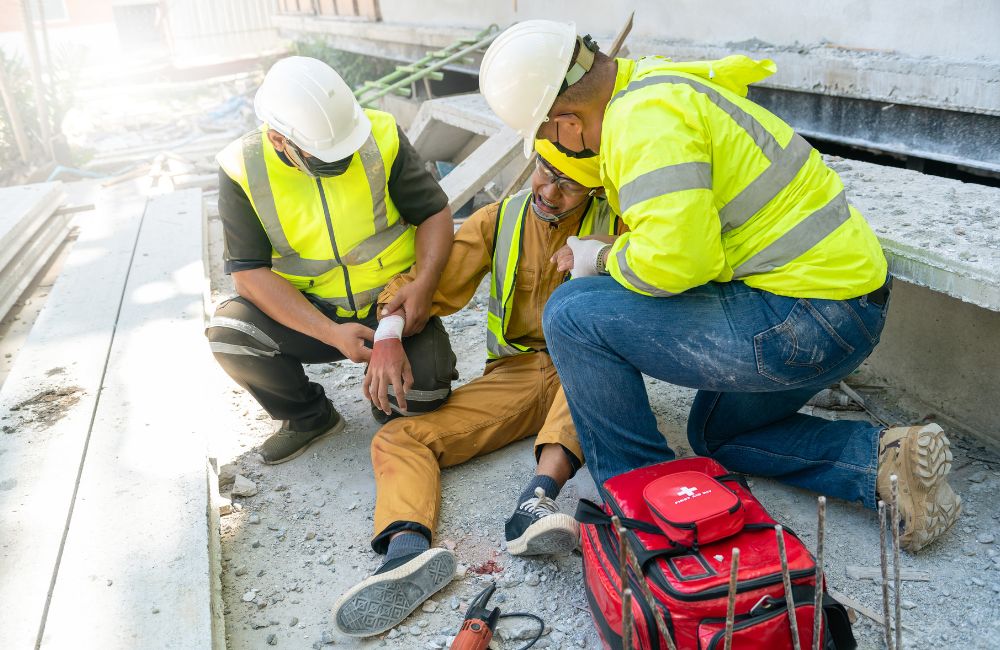 Machinery accidents frequently cause construction injuries, often resulting from improper use, lack of maintenance, or operator error. These accidents can involve various equipment like forklifts, cranes, and power tools, leading to serious injuries such as crush injuries, amputations, or fatalities.
Machinery accidents frequently cause construction injuries, often resulting from improper use, lack of maintenance, or operator error. These accidents can involve various equipment like forklifts, cranes, and power tools, leading to serious injuries such as crush injuries, amputations, or fatalities.
To prevent machinery accidents and ensure construction site safety, follow these tips:
- Provide comprehensive training on equipment operation and safety protocols for all workers.
- Regularly inspect machinery for defects or malfunctions and perform necessary maintenance.
- Ensure all safety features on machinery, such as emergency stops and guards, are in working order.
- Enforce strict adherence to safe operating procedures and protocols for each piece of equipment.
- Trained supervisors to oversee equipment operation and ensure compliance with safety measures.
7. Vehicular Accidents
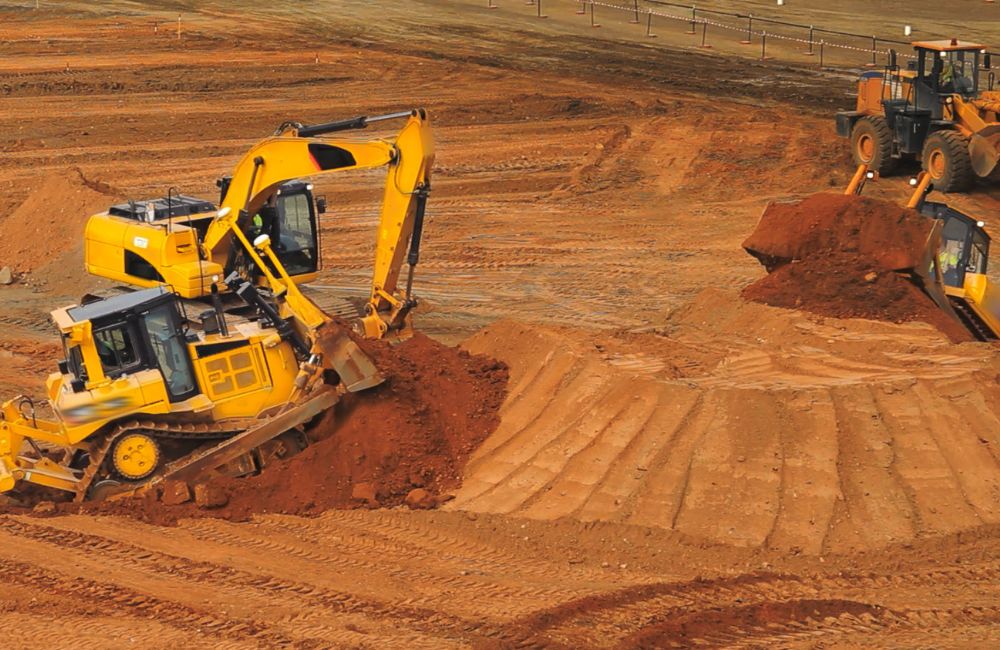 Vehicular accidents are a common cause of construction injuries, involving incidents with vehicles like trucks, bulldozers, and cranes. These accidents can occur due to operator error, blind spots, or inadequate traffic control measures on-site, leading to injuries ranging from minor collisions to more severe incidents.
Vehicular accidents are a common cause of construction injuries, involving incidents with vehicles like trucks, bulldozers, and cranes. These accidents can occur due to operator error, blind spots, or inadequate traffic control measures on-site, leading to injuries ranging from minor collisions to more severe incidents.
To prevent vehicle accidents and ensure construction site safety, consider these tips:
- Develop and implement clear traffic control plans to regulate vehicle movement on site.
- Provide thorough training for vehicle operators on safe driving practices and awareness of blind spots.
- Install reflective markings, backup alarms, and vehicle cameras to improve visibility.
- Establish designated routes for vehicle traffic to minimize the risk of collisions with pedestrians or other vehicles.
- Use a spotter system to guide and alert vehicle operators to potential hazards.
8. Fire and Explosions
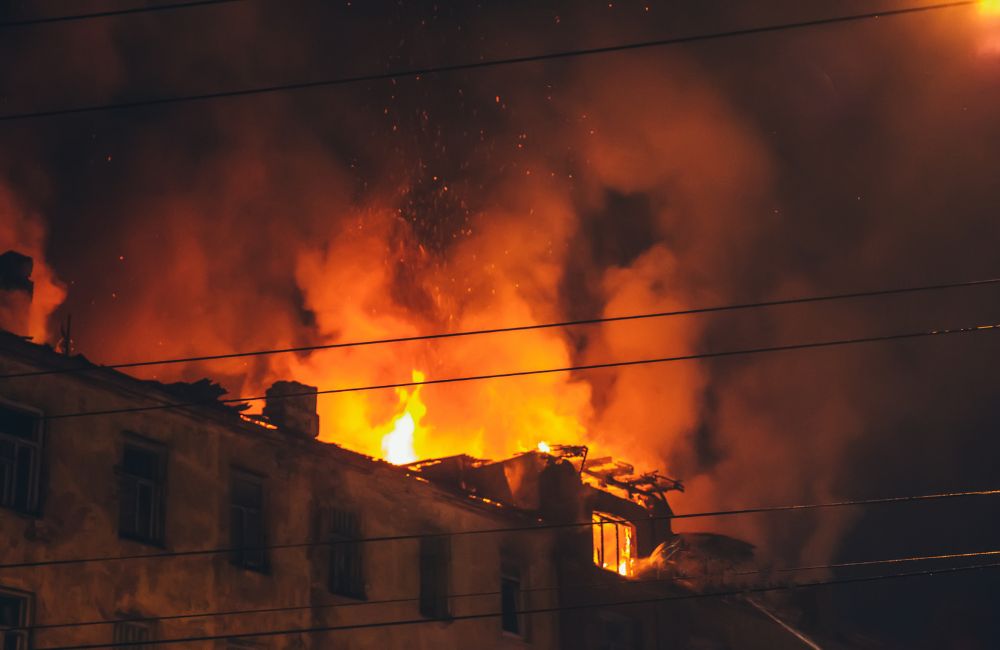 Fire and explosions are significant hazards on construction sites, posing risks of construction injuries and property damage. According to the National Fire Protection Association (NFPA), a fire department responds to a fire every 21 seconds, making it a significant issue.
Fire and explosions are significant hazards on construction sites, posing risks of construction injuries and property damage. According to the National Fire Protection Association (NFPA), a fire department responds to a fire every 21 seconds, making it a significant issue.
These incidents can result from various factors, such as electrical faults, flammable materials, or improper storage of hazardous substances. They can lead to burns, smoke inhalation, and other serious injuries to workers and bystanders.
To prevent fire and explosions on construction sites and minimize construction injuries, follow these safety tips:
- Store flammable materials and hazardous substances in designated areas away from ignition sources.
- Inspect electrical systems and equipment for faults or damage and address issues promptly.
- Enforce no-smoking policies in areas where flammable materials are present.
- Install and maintain fire extinguishers at strategic locations and ensure workers are trained.
- Develop and practice emergency response plans, including evacuation procedures and assembly points.
9. Exposure to Harmful Substances
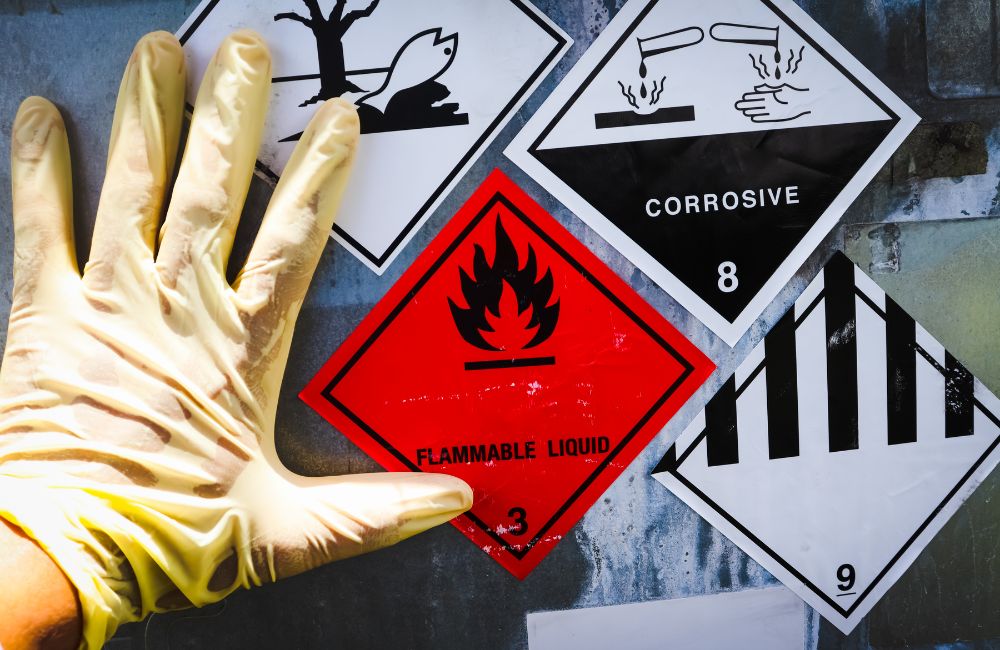 Exposure to harmful substances is a significant concern in construction, leading to construction injuries and long-term health issues. Workers may come into contact with substances like asbestos, lead, silica dust, and chemical solvents, which can cause respiratory problems, skin irritations, and even serious illnesses such as cancer.
Exposure to harmful substances is a significant concern in construction, leading to construction injuries and long-term health issues. Workers may come into contact with substances like asbestos, lead, silica dust, and chemical solvents, which can cause respiratory problems, skin irritations, and even serious illnesses such as cancer.
To prevent exposure to harmful substances and protect workers' health on construction sites, consider these safety tips:
- Ensure adequate ventilation in enclosed areas where harmful substances are used or present.
- Provide and enforce the use of appropriate PPE, such as masks, gloves, and protective clothing.
- Train workers on safe handling, storage, and disposal procedures for hazardous materials.
- Regular air quality monitoring is conducted to detect and mitigate exposure risks.
- Whenever possible, substitute harmful substances with less hazardous alternatives.
10. Cut, Laceration, and Puncture Wounds
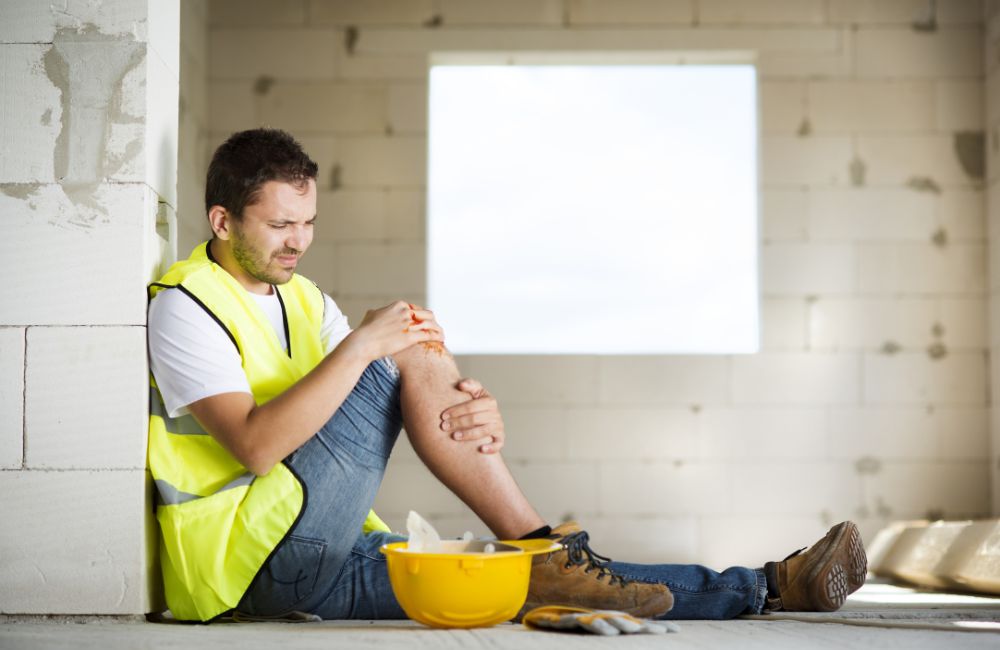 Cut, laceration, and puncture wounds are common construction injuries that occur when workers come into contact with sharp objects, tools, or machinery. These injuries can range from minor cuts and scratches to deep lacerations and puncture wounds, posing risks of infection and other complications if not properly treated.
Cut, laceration, and puncture wounds are common construction injuries that occur when workers come into contact with sharp objects, tools, or machinery. These injuries can range from minor cuts and scratches to deep lacerations and puncture wounds, posing risks of infection and other complications if not properly treated.
To prevent cut, laceration, and puncture wounds on construction sites and ensure worker safety, follow these tips:
- Train workers on safe handling and use of sharp tools and equipment.
- Provide and enforce the use of personal protective equipment (PPE) such as gloves, goggles, and steel-toed boots.
- Regularly inspect tools and equipment for defects or damage that could cause injuries.
- Encourage safe work practices, such as keeping work areas clean and organized to minimize the risk of accidents.
- Provide workers with first aid training so they can respond promptly and effectively to cuts, lacerations, and puncture wounds.
Building Safety Together with Claris Design•Build
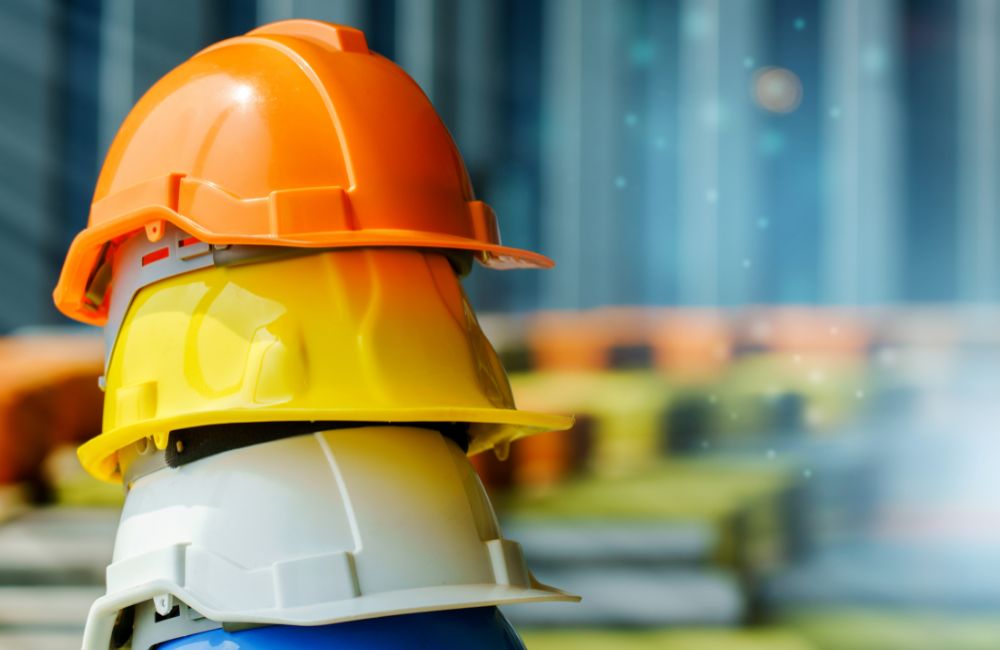 At Claris Design•Build, safety isn't just a priority — it's the foundation of everything we do on construction sites. Our experienced team is committed to maintaining the highest safety standards, implementing rigorous safety protocols, providing comprehensive training, and utilizing state-of-the-art equipment to minimize risks and prevent injuries.
At Claris Design•Build, safety isn't just a priority — it's the foundation of everything we do on construction sites. Our experienced team is committed to maintaining the highest safety standards, implementing rigorous safety protocols, providing comprehensive training, and utilizing state-of-the-art equipment to minimize risks and prevent injuries.
With an Insurance Safety Modification rate of 0.87, we stand out as leaders in construction safety. This achievement reflects our unwavering dedication to creating secure work environments. Additionally, all our superintendents receive 30 hours of OSHA training, equipping them with the knowledge and skills necessary for exemplary safety management.
Choose Claris Design•Build and experience the advantages of working with a commercial construction firm that doesn't just talk about safety—we live it. Contact us today to ensure your next project meets the highest standards of safety and excellence.





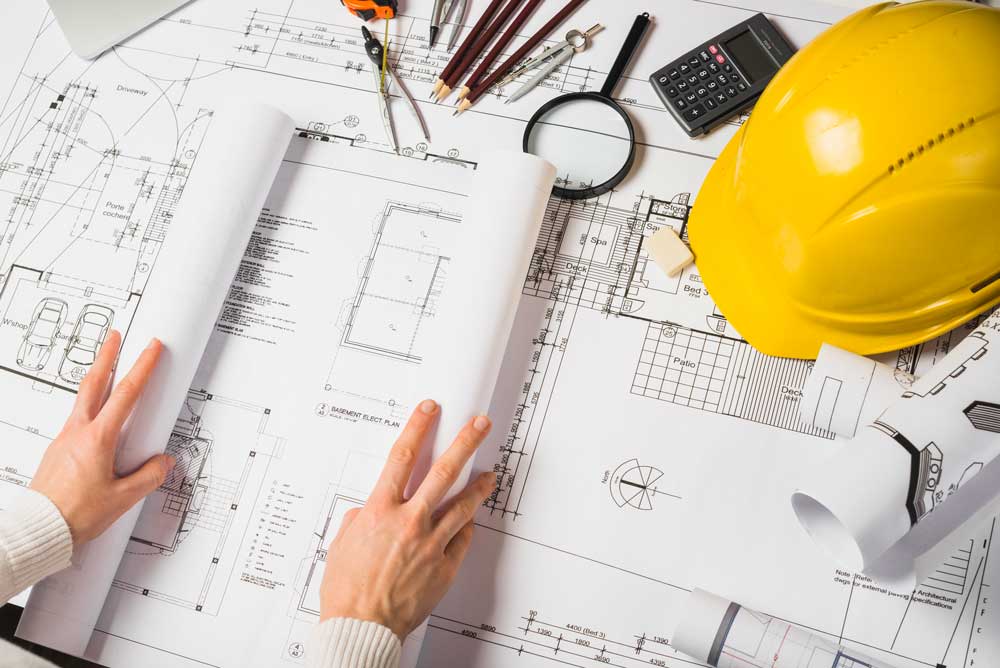

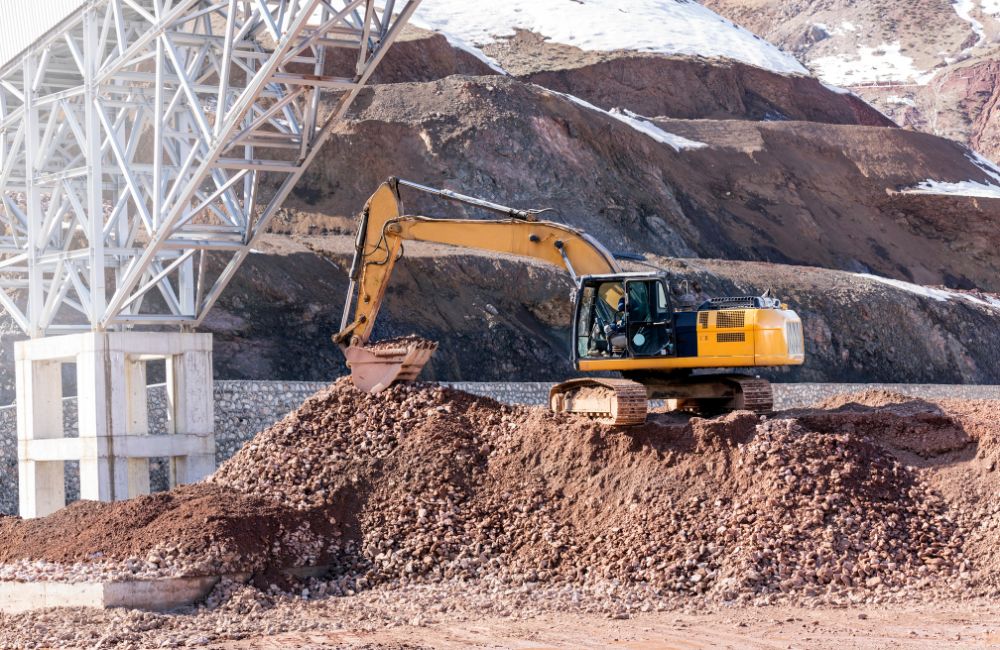
![[2025 UPDATE] Commercial Construction Cost per Square Foot in the US](https://www.clarisdesignbuild.com/wp-content/uploads/2025/04/2025-UPDATE-Commercial-Construction-Cost-per-Square-Foot-in-the-US-3.jpg)